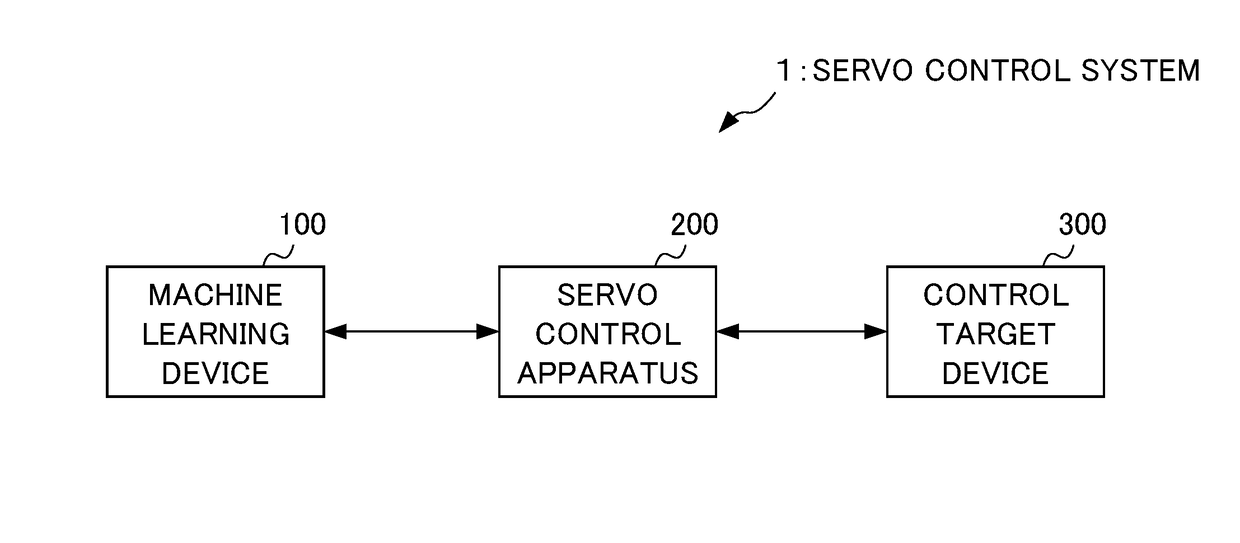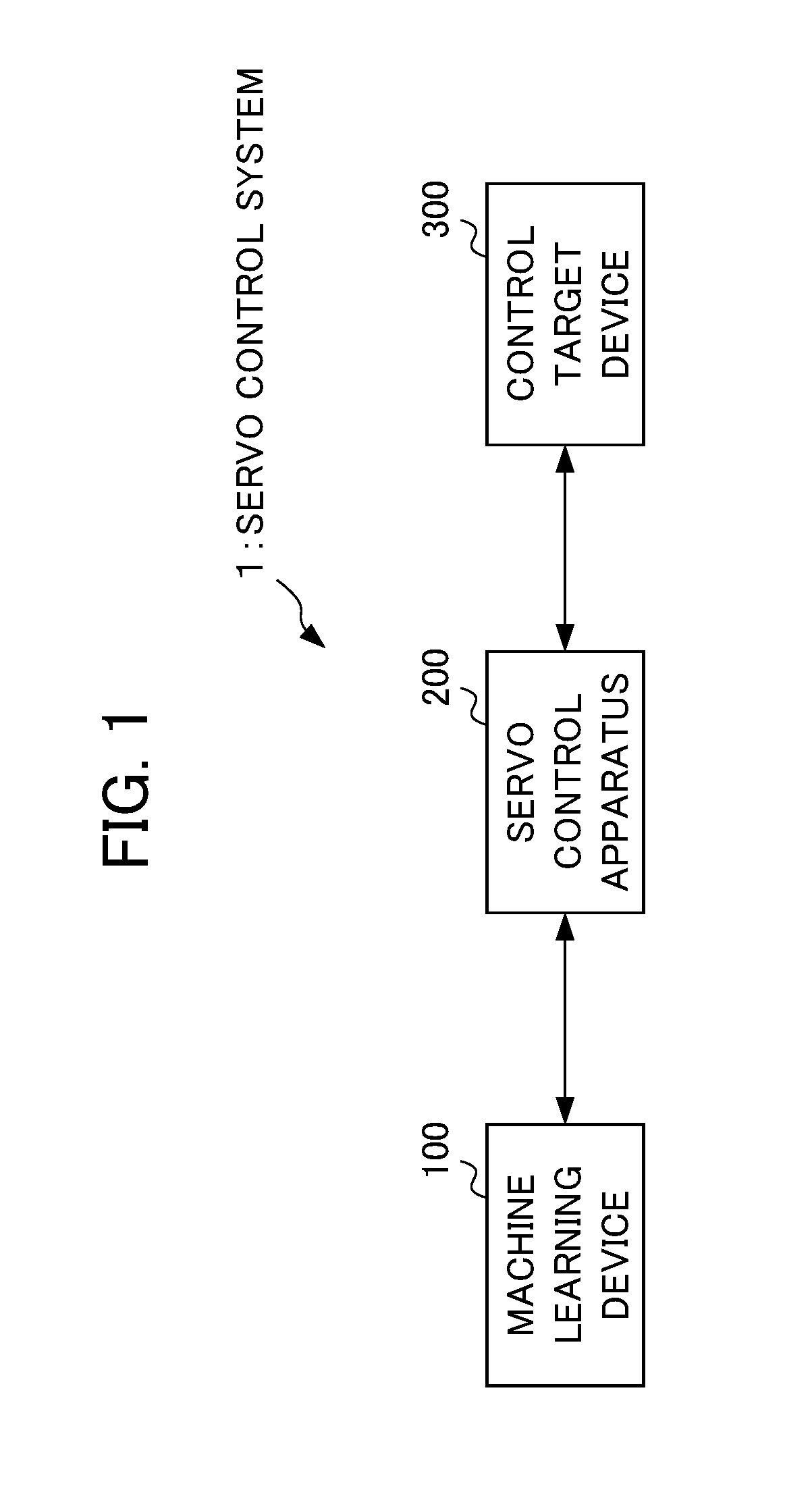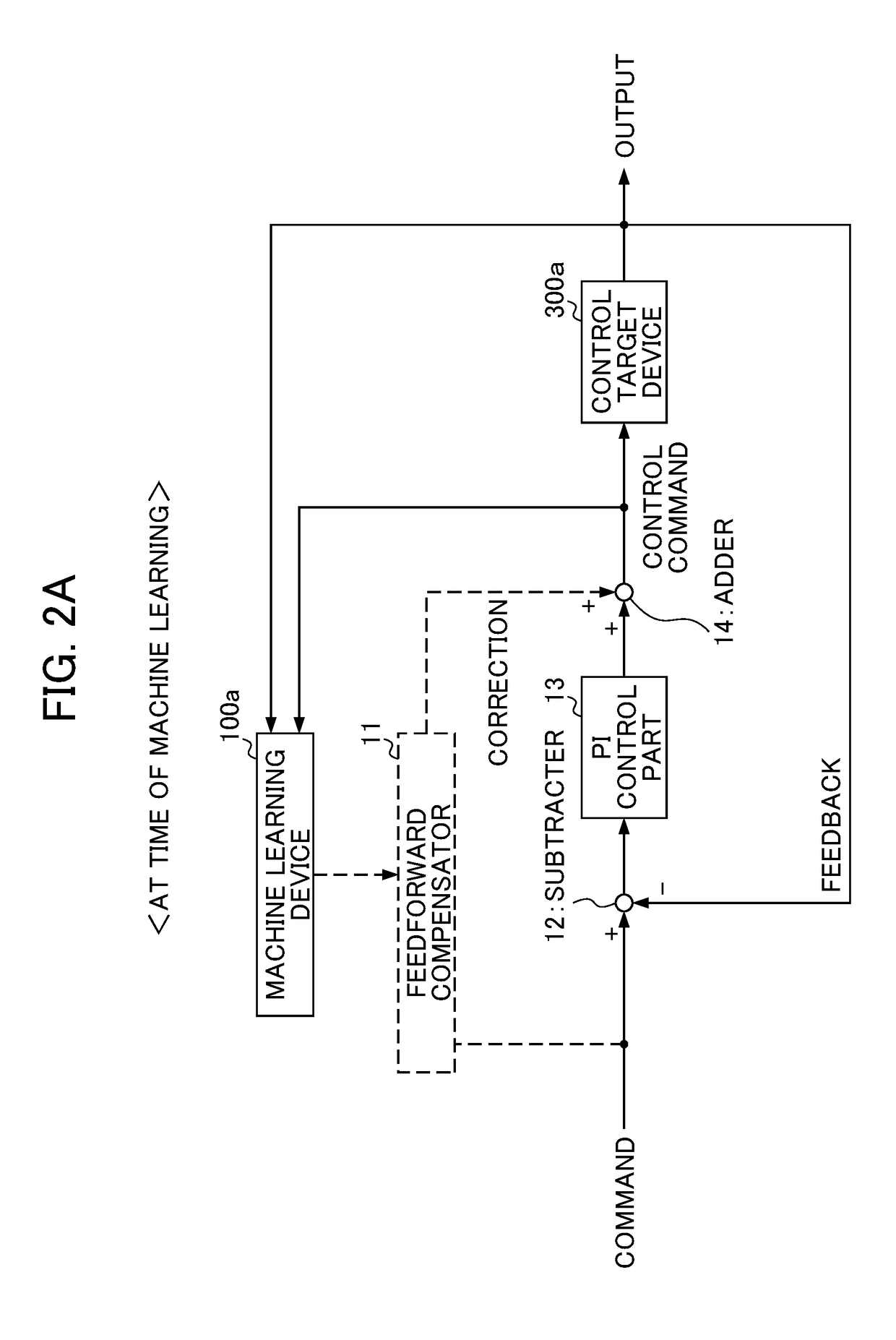Machine learning device, servo control apparatus, servo control system, and machine learning method
a technology of servo control apparatus and machine learning method, which is applied in the direction of adaptive control, program control, instruments, etc., to achieve the effect of improving command follow-up performance and easy adjustmen
- Summary
- Abstract
- Description
- Claims
- Application Information
AI Technical Summary
Benefits of technology
Problems solved by technology
Method used
Image
Examples
first embodiment
[0033]Next, the configuration according to the first embodiment is described with reference to FIG. 2A and FIG. 2B. In respective embodiments including the present embodiment, the portions to be operated at “the time of machine learning” and at “the time of feedforward controlling” are different. FIG. 2A is a diagram corresponding to “the time of machine learning,” while FIG. 2B is a diagram corresponding to “the time of feedforward controlling.”
[0034]As shown in FIG. 2A and FIG. 2B, the present embodiment is configured to include a machine learning device 100a, a feedforward compensator 11, a subtracter 12, a PI control part 13, an adder 14, and the control target device 300a. The feedforward compensator 11, the subtracter 12, the PI control part 13 and the adder 14 are the components of a servo control apparatus 200a. In the present embodiment, as the feedback control, PI control including proportional operation additionally with integral operation is performed. It is noted that t...
second embodiment
[0063]Next, the configuration according to the second embodiment is described with reference to FIG. 5A and FIG. 5B. FIG. 5A is a diagram corresponding to “the time of machine learning,” while FIG. 5B is a diagram corresponding to “the time of feedforward controlling.”
[0064]It is noted that the basic functions and configuration of the second embodiment are common to those of the first embodiment described above, and thus the duplicate descriptions thereof are omitted hereinafter and different matters between the first embodiment and the second embodiment are described in detail.
[0065]As shown in FIG. 5A and FIG. 5B, the present embodiment is configured to include a machine learning device 100b, a feedforward compensator 21, a subtracter 22, a position control part 23, an adder 24, a subtracter 25, a speed control part 26, an adder 27, a control target device 300b and an integrator 29.
[0066]The feedforward compensator 21, the subtracter 22, the position control part 23, the adder 24,...
third embodiment
[0086]Next, the configuration according to the third embodiment is described with reference to FIG. 7A and FIG. 7B. FIG. 7A is a diagram corresponding to “the time of machine learning,” while FIG. 7B is a diagram corresponding to “the time of feedforward controlling.”
[0087]It is noted that the basic functions and configuration of the third embodiment are common to those of the first embodiment and the second embodiment described above, and thus the duplicate descriptions thereof are omitted hereinafter and different matters from the first embodiment and the second embodiment are described in detail.
[0088]As shown in FIG. 7A and FIG. 7B, the present embodiment is configured to include a machine learning device 100c, a feedforward compensator 31, a subtracter 32, a position control part 33, an adder 34, a subtracter 35, a speed control part 36, an adder 37, a subtracter 38, a current control part 39, an adder 40, an amplifier 41, a control target device 300c and an integrator 43.
[0089...
PUM
 Login to View More
Login to View More Abstract
Description
Claims
Application Information
 Login to View More
Login to View More - R&D
- Intellectual Property
- Life Sciences
- Materials
- Tech Scout
- Unparalleled Data Quality
- Higher Quality Content
- 60% Fewer Hallucinations
Browse by: Latest US Patents, China's latest patents, Technical Efficacy Thesaurus, Application Domain, Technology Topic, Popular Technical Reports.
© 2025 PatSnap. All rights reserved.Legal|Privacy policy|Modern Slavery Act Transparency Statement|Sitemap|About US| Contact US: help@patsnap.com



